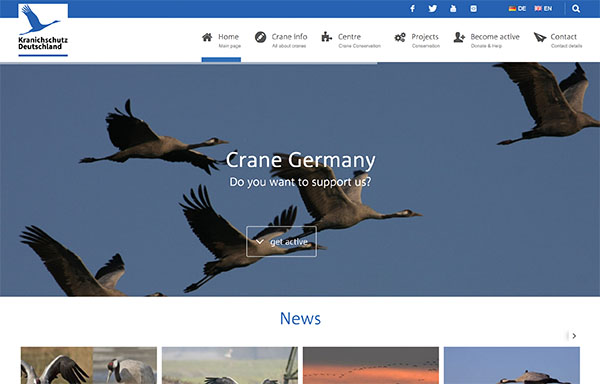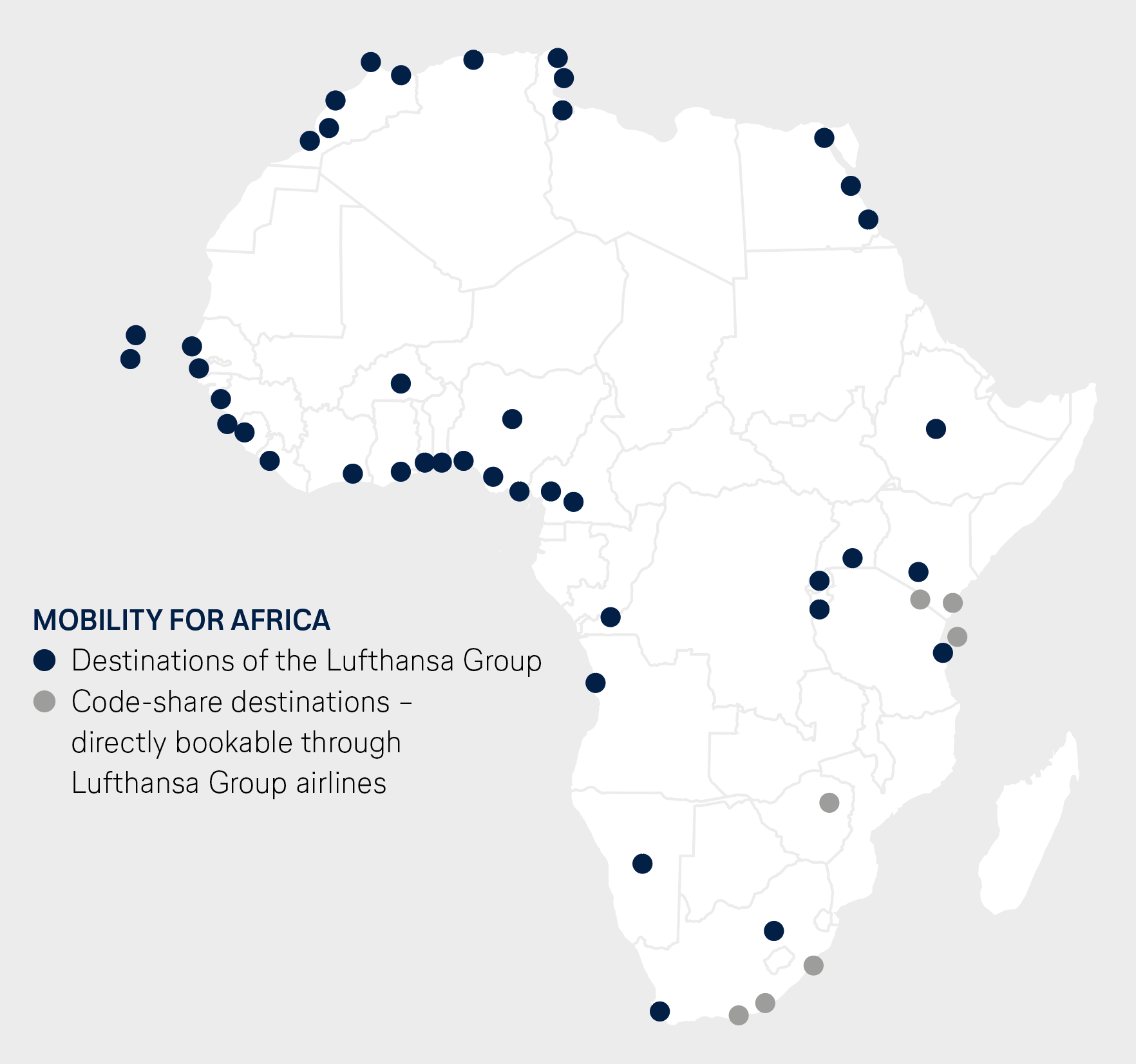Telegram
topic overview
Linking air and rail transport: Lufthansa expands its offering
Crane protection: many decades of commitment to be continued
Employer ranking: Lufthansa occupies top spots
Flights to Africa: growing faster than any other region of the world
Linking air and rail transport
Lufthansa expands its offering
Sustainable mobility concepts aim at finding optimal ways to link various different modes of transport. This is particularly relevant to Frankfurt as an air transport hub which draws over 200,000 travelers a day at peak times of the year.
Lufthansa and Deutsche Bahn's Express-Rail offer is making a contribution in this area and is currently undergoing significant expansion – since mid-February, in addition to cities such as Cologne, Stuttgart and Dortmund, the main stations at Nuremberg and Würzburg have also been included in the program. Further cities will follow in the coming year. The benefits for Lufthansa Express-Rail guests include: the booked flight ticket can already be used on the rail journey, seats are reserved, Miles&More miles can be earned, and, in the case of unexpected train or flight delays, Lufthansa will rebook their passengers onto a connecting train or flight.
Crane protection
many decades of commitment to be continued
Lufthansa has been involved in the protection of cranes since the 1980s. Their successful collaboration with NABU (Nature and Biodiversity Conservation Union e.V.), who are partners in Crane Protection Germany gGmbH, will be continued – in mid-February, the Lufthansa Group renewed their partnership agreement. In doing so, the partners are building on their joint successes of the past few years, such as the setting up of the fully accessible crane observation center KRANORAMA at the 'Günzer See' and the NABU Crane Center in Gross Mohrdorf. The center is situated in Europe's most important roosting ground for the common crane and attracts more than 15,000 visitors every year.
Employer ranking
Lufthansa occupies top spots
Lufthansa is rated highly with students as a potential employer, according to the latest results of the Universum Student Survey, in which around 40,000 students took part. Lufthansa Technik was in 8th place among students of engineering. The Lufthansa Group, on the other hand, came 6th with economics students and even achieved fourth place with humanities students. The good news for potential candidates? In the current year, the Lufthansa Group will be taking on more than 8,000 new employees – more than ever before.
Flights to Africa
growing faster than any other region of the world
The Lufthansa Group flies to more that 40 destinations in Africa. On average, an aircraft belonging to Austrian Airlines, Brussels Airlines, Eurowings, Lufthansa or Swiss takes off somewhere on the African continent every 49 minutes. There is no other region of the world where the Lufthansa Group is experiencing faster growth. Furthermore, the company has strong partnership agreements with airlines such as Ethiopian Airlines and South African Airways. The Lufthansa Group’s commitment in this part of the world also has a political dimension. Air transport connects the continent in a way that no other mode of transport can do with the streams of tourists and goods which come from all over the world, and is of vital importance for the growth and prosperity of the various individual economies. Politicians can support this development – through the further liberalization of the air traffic markets which would bring long-term benefits for both Europe and for the African continent.
Further content on the topic
Website
Express Rail Offer
Lufthansa is continuing to expand its express rail offers. Access all the information online.
Website
Crane Conservation Germany
Crane Conservation Germany offers unique opportunities to find out about migratory birds, which, like no other organization in Germany, is committed to protecting. Lufthansa has been an important partner of Crane Conservation Germany for decades.

